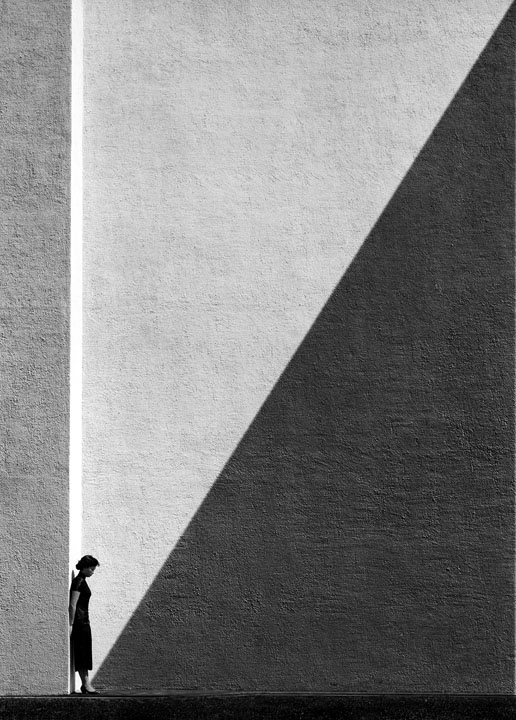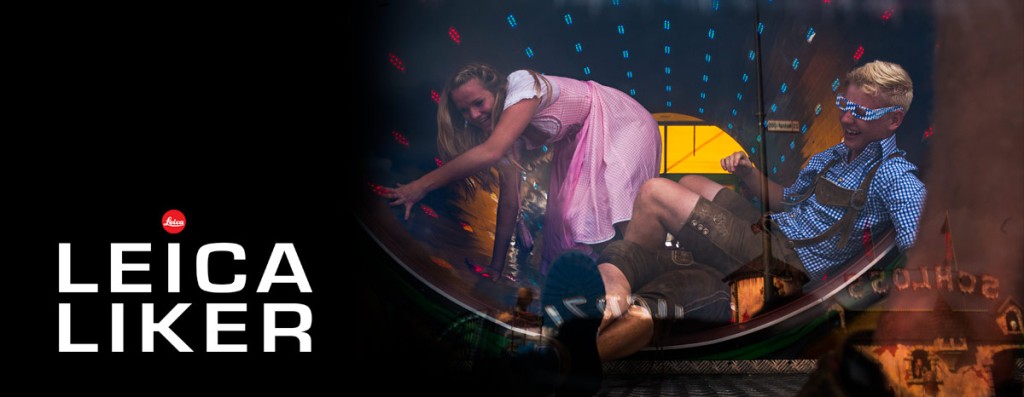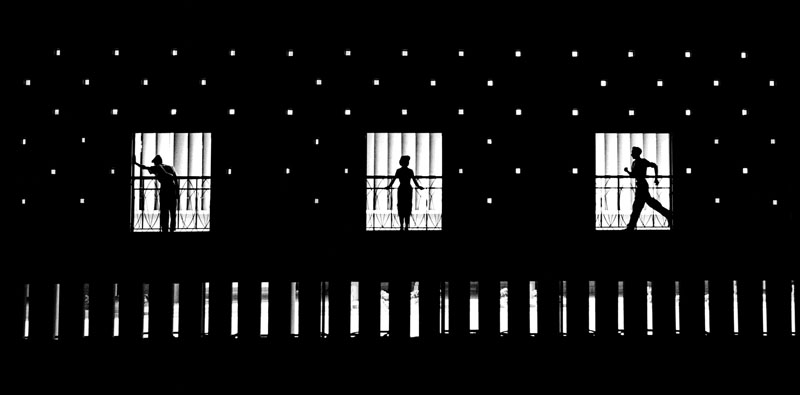FAN HO, Hong Kong Master Street Photographer #1
Leica Liker is honored to have Fan Ho, a Hong Kong Street Photographer, to launch our “Master Street Photographer Series” and be our first 2013 guest. We are especially proud as Mr. Ho is also our first Chinese guest.
I first came upon Mr. Ho’s photographs quite by accident. I was shooting around Union Square in San Francisco and saw the Geary building which hosts many photography and art galleries. When I walked into the Modern Book Gallery, I was stunned to see the most artistic and amazing street photographs of my birth home, Hong Kong, hanging on the walls. Images taken in the 1950’s and 60′ of a place I saw in old movies. I couldn’t have asked for better inspiration than what hung before me.
When you look at the images, you can’t help but feel like they were taken with a filmic or cinematographic eye. Indeed, Mr. Ho is a retired film director and actor. His command of natural light is masterful. He uses it to emphasize the drama of the subjects. He uses light not just for illumination but to create a mood, an atmosphere. Locations look like film sets which he has carefully sought out in his reconnaissance. The compositions are simple, clean and feel modern. They combine a keen sense of graphic juxtaposition of elements, depth and perspective. Each image appear to tell cinematic stories of a time lost.
Hong Kong was going through a transition from old guard to progress of the new guard during the 1950’s and 60’s. Mr. Ho seemed to have his finger on the pulse of that grand event: The old and young walking into the bathing light of the future; People pushing hand carts along the railroad of progress; A Child at work as part of the old world; A modern business man rushing by; Construction workers silhouetted against the old bamboo scaffolding- building the future… Like great storytelling, they also draw on life’s themes beyond old versus new.
Each of Mr. Ho’s photographs transport us to another time with their nostalgia. He even calls the streets the “Living Theater”. Most importantly, they seem to hold the hopes and dreams of the captured soul, touching our empathy and pining for what once was, an intimate time in our history.

Here is my interview with FAN HO:
Nick Name: Bah gam – Cantonese for ‘great scholar’.
Currently living in: San Jose, CA. But came from Hong Kong via Shanghai
What brought you and your family to Hong Kong? During the Sino-Japanese war in the late 1940’s my parents moved to Macau to work and left me in Shanghai alone. I was around 10 years old when I decided to run away. Hong Kong was the place to go. Besides, it is near Macau
Motto: I don’t have one.
Profession/Job: Retired Film Director and Actor.
Websites: http://www.modernbook.com/fanho.htm
Organizations or groups: Elected Fellow of the Photographic Society of America, Fellow of the Royal Photographic Society and Fellow of the Royal Society of Arts, England; Honorary Member of the Photographic Societies of Germany, France, Italy, Belgium, Brazil, Argentina, Singapore and etc..
Favorite street camera & Lens: Rolleiflex and some times Leica.
Why do you like the Rolleiflex? I personally love the square format. The square size of the negative was suitable for my purpose of cropping – I like to crop vertically and horizontally. This is my trademark.
Did you ever use a Leica? If so, which one? And did you like it? My first camera was a Nikon during the late 1940’s or early 50’s. But I used it for snap shots. I have shot with the Leica. I can’t remember the model . I especially used it for the candid street scene shots as well as photojournalistic shots because it was small and light. Some shots in my book were taken with the Leica.
Back up street Camera & Lens: I’m like a cowboy, I use one camera- I seldom used two cameras- maybe because I’m lazy or it was too heavy to carry two cameras. One camera is enough.
Favorite photography gadget: I’m a simple camera person. No gadgets.
Favorite street food: None
Do you listen to music while shooting? No- absolutely not! I concentrate on photographing to take a good picture. It’s actually very hard work. You must see and think all the time. You have to think how to surpass your past work with a new angle or a new style or a new feeling. You must use your heart to determine that decisive moment which Henri Cartier-Bresson talks about. You must get the feeling and get a response from the subject you are shooting. At that moment you must care, breathe and love the universe – it’s not just about making a beautiful picture. I put my whole life into a single photograph. Negative was expensive in my day, when you click a shutter it cost money. I am like a cowboy with one bullet and not a machine gun, looking for that decisive moment.
Favorite Music When Shooting and/or Editing: None when shooting. I do listen to classical music sometimes when I edit.
Favorite photo software: I use Photoshop and Lightroom to enhance my images. I prefer to go to a dark room but because of health reasons I don’t go there any longer.
3 Favorite Master Photographers: Henri Cartier-Bresson
3 Favorite Contemporary Photographers: Henri Cartier-Bresson- He is still contemporary and relevant for me.
Which three photographers prints do you own? None unfortunately.
Color or Black and White? I love both.
Film or Digital? I am old fashioned I still use film. I personally love to shoot the old way. I love to hear the sound of the shutter. It’s like music to me. I also love the darkroom.
Is there a special time of day that you like to shoot or is any time good? I like the sun to be low so I can get long shadows.

How would you define street photography? I would venture to follow Henri Cartier-Bresson’s definition of the ‘decisive moment’:
“To me, photography is the simultaneous recognition, in a fraction of a second, of the significance of an event as well as of a precise organization of forms which give that event its proper expression.” – Henri Cartier-Bresson
Why did you choose street photography and not another form of photography like stamp collecting? In reality, street photography chose me… I was a big movie fan as a child and in Shanghai, I watched many movies all alone. I love story telling. So when I escaped to Hong Kong, I wanted to tell stories in some way. After a while, I entered St Paul’s College, one of the best if not the best college at the time in Hong Kong. I wanted to be a writer. I did so well in my writing classes that I earned the nickname the “great scholar”- Bah Gam, even from my professors. I was an exceptional student and was able to work from home while my classmates had to stay in school.
I loved writing of all kinds, especially novels. Then one day, all of a sudden, I couldn’t continue studying anymore. I couldn’t read because I had a migrane that wouldn’t go away. The doctor couldn’t cure me. I found the only way to relieve my headache was to breathe fresh air by walking the streets. It became so boring, so I took snap shots to wile away the time. I entered a contest and got the 1st prize and was encouraged. So I started telling my stories using photography as the medium. The best thing, it gave me no headache. To tell a more complete story when looking at films.

What motivates you to photograph the streets? Like I said, it helped relieve my headaches. It was a way for me to express my love to tell stories.
Is street photography an obsession? It’s life saving.
Are you a lone shooter or do you like shooting with friends or groups? I always shoot by myself. I can’t have distractions.
Are you an invisible or visible photographer? I dress to blend in. I never try to stand out.
Favorite street photography city? Hong Kong is a beautiful place especially the nostalgic old Hong Kong. When I shot it in the 50’s and 60’s, it was close to me.
What inspires your photography? I love to be a filmmaker. I love drama, poetry, art, sculpture, music – all this gives me inspiration. Oh, and in particular -Brahms and Mahler symphonies.
Is there a philosophy or aesthetic behind your compositions that you apply to your photos? I took pictures according to my instinct. I didn’t find anything in particular that was attractive. I just took photographs the way I saw it and didn’t follow any particular master, style or philosophy.
How does film directing and acting affect what and how you see? I see the street as a Living Theater. It’s also the title of my book. You can say ;I wait for the actors to walk to their marks.
How do you go about shooting a street photograph? I usually find a location and stake the place out for a while. Many of my photographs are shot n the same place at different times of the day and year.
What do you look for in a photograph by others and by yourself? Actually, I would like to tell you about it by showing you my favorite photograph. It is titled As Evening Hurries By – 1954. It was shot in the western district of Hong Kong. I studied Chinese literature at the time. I read a poem that greatly impressed me. So I had to find a place that had the same feeling I got from the poem. The mood, the atmosphere and main character — all had to express the same emotion as the poem. Once I found the location, I went there for many days. Tricycle carts and the men walking home; the silence followed by the surf crashing the walls; the lighting was low… for me the decisive moment was simply amazing. The image still haunts me today and I shot it half a century ago.
What kind of style would you describe your photos? I would say cinematic, nostalgic. I crave for the nostalgia of good days gone by.
What criteria do you go by that would qualify as a decisive moment for you? I find a location I like and wait until the suitable subject matter appears. The lighting, the mood and the composition that matches a certain climax that I anticipate.
What are you trying to express with your photographs? Both normal street and then the multiple exposure shots? I express what I feel at the time and what is in my heart. At first I have an image in my head. I say to myself, I know that it will come out like this. The expression is about a time past. Something along the lines of longing I suppose.
I also like to experiment and to juxtapose images against each other to see both the compositional effect and the content.
How do you choose your shots when you edit? What tells you that the shot is good? If the feeling that appealed to me during the time I shot the image still remains, then something content inside me must move me as confirmation.
Did you ever print your own photos? I use to love the dark room. I did all my own prints. Now I have the assistance of the computer.
Do you still shoot a lot? No. I don’t shoot anymore because my health doesn’t permit it. Except the occasional snap shot.
Best Single advice on how to improve your work: I feel technique is not too important. It’s more important to use your eyes, mind and heart. Techinique is something everyone can do. If you want to take your photography to a higher level, you must tell something. Move something. You must feel it when you make the photograph and that will take you to a higher level. Photography needs to be haunting and worth remembering.
Best single advice on how to edit your work: It has to move something in me.
Best single advice for someone who wants to get into street photography: You have to love to want to do it.
What’s the best moment in your street photography career? Printing my work and seeing my concept materialize on a piece of paper.
What is the worst moment in your street photography career? None. All are good. All are memories.
What projects are you working on? Since I can’t shoot anymore, I am going through my old images and working with them with a new context. You can find some samples in my web site under new work.
Are there exhibitions planned in the future? Yes. New work exhibition of my montage work will be shown along with my new publication, ‘Fan Ho: Hong Kong Memoir’ will be taking place this year and in 2014. Please contact Modernbook Gallery for more information here.
Leica Liker thanks Fan Ho for sharing his experience and inspirational advice with us. We look forward to checking in on him in the future.
Fan Ho’s books are available from Modern Art Gallery here.
We also thank Mark Pinsukanjana of Modern Book Gallery for arranging the interview.
You can check out Fan Ho’s gear in “Liker Bags’n Gear” here.









![As evening hurries by[1]](https://leicaliker.files.wordpress.com/2013/01/as-evening-hurries-by1.jpg?w=648&h=800)

















